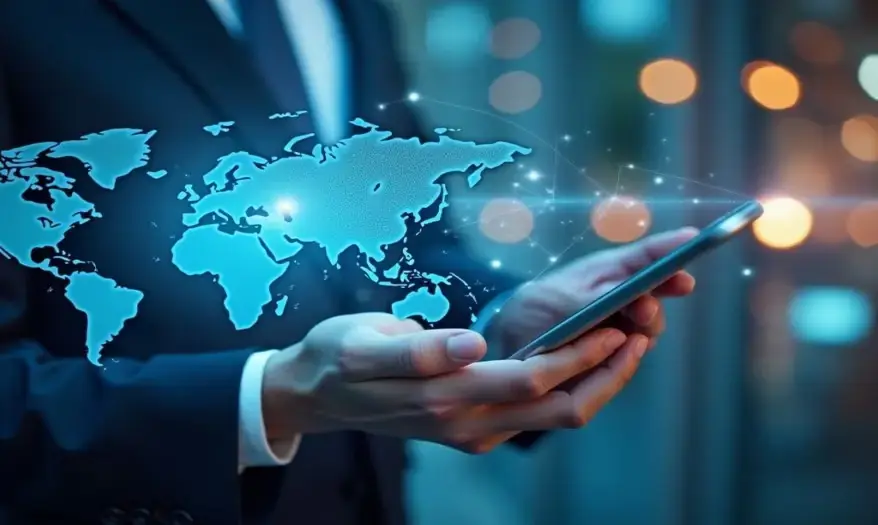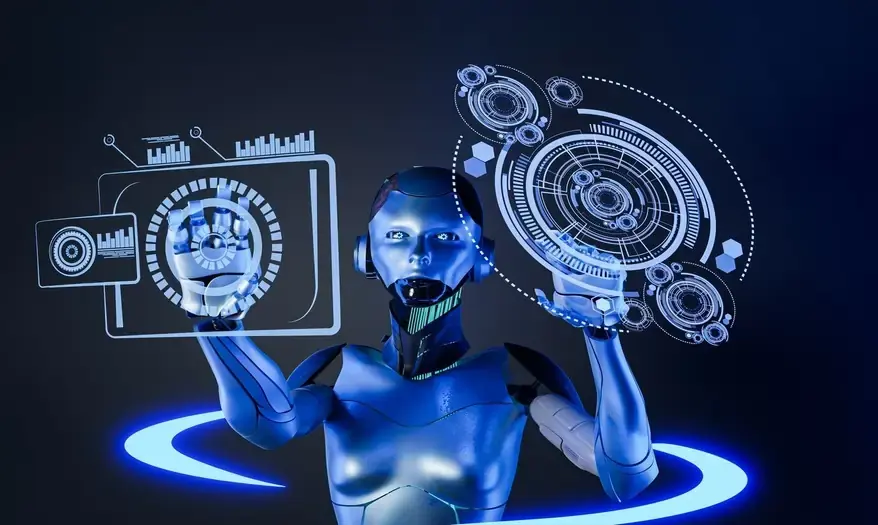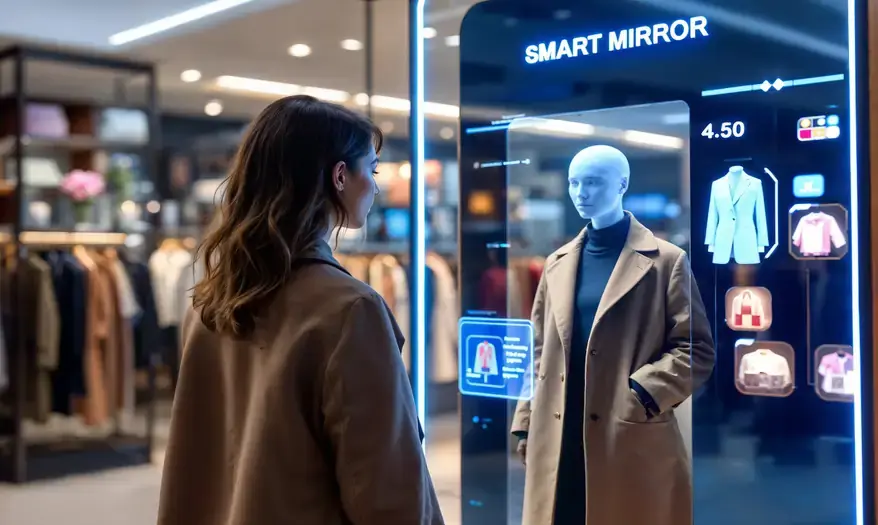Top 10 Customer Service Technologies to Watch in 2025
The way technology and customer service intersect has transformed how businesses connect with you. In fact, over the past decade, tools like AI, social media, and mobile-first strategies have reshaped interactions and instructional design needs. Also, by 2025, you’ll expect seamless, personalized experiences powered by automation and omnichannel platforms. As Steve Jobs said, “Innovation distinguishes between a leader and a follower.”
AI-Powered Chatbots and Virtual Assistants
Enhancing customer interactions with AI-powered conversational agents
AI-powered chatbots are revolutionizing how you engage with businesses. Indeed, these conversational agents are no longer limited to answering basic questions. Also, by 2025, advancements in natural language processing will allow them to understand your queries better and respond more accurately. Imagine a chatbot that not only answers your question but also remembers your preferences from previous interactions. Actually, this contextual awareness creates a more personalized experience.

Another exciting development is emotional intelligence. Chatbots will soon recognize your tone and respond empathetically, making interactions feel more human. For example, if you’re frustrated, the chatbot can adjust its tone to calm you down.
Real-time translation is another game-changer.
In fact, it enables seamless communication in multiple languages, breaking down barriers and enhancing global engagement. These improvements make AI-powered chatbots a cornerstone of modern customer service technology. They’re not just tools; they’re partners in creating meaningful customer interactions.
Real-world examples of chatbots and virtual assistants in action
AI-powered chatbots and virtual assistants are already transforming industries. Particularly, in retail, they provide personalized recommendations and optimize inventory, boosting sales and loyalty. Specifically, in healthcare, they streamline administrative tasks and improve patient engagement. Also, Manufacturing uses them to analyze supply chain data, reducing costs and delays.
| Industry | Application Description |
|---|---|
| Retail | AI assistants provide personalized recommendations and respond to customer inquiries, optimizing inventory to boost sales and customer loyalty. |
| Healthcare | AI virtual assistants enhance patient interaction and streamline administrative tasks, improving overall efficiency. |
| Manufacturing | AI analyzes supply chain data to optimize inventory, forecast demand, and manage logistics, reducing costs and delays. |
However, ethical considerations remain crucial. Businesses must ensure these tools don’t perpetuate biases or compromise your privacy. In fact, transparency about chatbot limitations is essential to maintain trust.
The advance of technology is based on making it fit in so that you don’t really even notice it.
– Bill Gates
Voice Recognition and Conversational AI
The growing role of voice technology in customer service
Voice technology is changing how you interact with businesses. It’s no longer just about calling a support line. Now, you can use your voice to ask questions, place orders, or even troubleshoot issues. This shift is making customer service faster and more convenient. By 2025, voice recognition is expected to play an even bigger role.
The global market for voice and speech recognition software is projected to grow by 2025.

Why is this happening? People love the simplicity of speaking instead of typing. It feels natural and saves time. Businesses are also investing in voice analytics platforms to better understand what you need. These platforms analyze your tone, speed, and words to provide more personalized support. For example, if you sound frustrated, the system can prioritize your request or connect you to a human agent.
What’s dangerous is not to evolve.
– Jeff Bezos
Voice technology is evolving rapidly, and it’s reshaping customer service in ways that benefit both you and businesses.
Benefits of natural language processing for seamless communication
Natural language processing (NLP) is the magic behind voice technology. It helps systems understand and respond to your words as if they were human. This makes communication smoother and more intuitive. Imagine calling a support line and not having to repeat yourself or navigate endless menus. With NLP, the system understands your request the first time.
NLP also enables real-time translation. You can speak in your native language, and the system will respond in another. This breaks down language barriers and makes global communication easier.
Voice analytics platforms powered by NLP can even detect emotions, helping businesses respond with empathy.
The result? Faster resolutions, fewer misunderstandings, and a better overall experience. Voice technology, combined with NLP, is making customer service smarter and more human-like.
Predictive Analytics for Hyper-Personalization
Anticipating customer needs with data-driven insights
Imagine a world where businesses know what you need before you even ask. That’s the power of predictive analytics solutions. By analyzing past behaviors and patterns, companies can anticipate your needs with incredible accuracy. This isn’t just guesswork—it’s a science powered by data analytics and reporting tools. These tools help businesses provide real-time, personalized support that adapts to your unique situation.
For example, predictive analytics can identify when you might face an issue with a product or service. Instead of waiting for you to contact customer support, the company can proactively reach out with a solution. This approach not only saves time but also improves your overall experience. It’s like having a personal assistant who’s always one step ahead.
Businesses also use predictive analytics to reduce churn. By identifying at-risk customers, they can take action to keep you engaged. Plus, these insights open doors for cross-selling and upselling opportunities, offering you products or services that truly match your preferences.
The aim of marketing is to know and understand the customer so well the product or service fits him and sells itself.
– Peter Drucker
Use cases of predictive analytics in personalized service delivery
The applications of predictive analytics solutions in customer service technology are endless. Let’s break it down:
| Benefit | Description |
|---|---|
| Proactive Problem Solving | Identifies and resolves potential issues before they affect the customer, improving satisfaction. |
| Faster Response Times | Anticipates issues, enabling quicker responses and reducing customer wait times. |
| Improved Customer Satisfaction | Proactively addressing problems leads to a more enjoyable experience, enhancing loyalty. |
| Cost Efficiency | Minimizes support requests by addressing issues early, lowering operational costs. |
| Better Resource Allocation | Predicts support demand, ensuring efficient deployment of staff and improving service quality. |
These benefits highlight why hyper-personalization is the future of customer service. By leveraging personalization engines, businesses can create personalized customer experiences that feel tailored just for you. Whether it’s recommending a product you’ll love or solving a problem before it arises, predictive analytics is transforming how companies interact with their customers.
In short, predictive analytics isn’t just a tool—it’s one of the most powerful customer experience tools available today. It’s helping businesses deliver smarter, faster, and more meaningful interactions.
Robotic Process Automation (RPA)

Streamlining repetitive tasks in customer service operations
Repetitive tasks can slow down your team and reduce efficiency. That’s where Robotic Process Automation (RPA) steps in. In fact, these automation tools handle routine tasks like data entry, order processing, and billing, freeing up your team to focus on more meaningful work. Think of RPA as your digital assistant, working tirelessly behind the scenes to keep things running smoothly.
For example, RPA can automate customer onboarding by collecting and verifying data. It can also manage customer records, ensuring they stay accurate and up-to-date. In fact, this not only saves time but also reduces errors. With bots operating 24/7, you can handle a higher volume of inquiries without delays. Faster responses mean happier customers and improved loyalty.
Automation will be the key to a better future.
– Elon Musk
By embracing RPA, you’re not just improving efficiency—you’re transforming how your business delivers customer support.
Examples of RPA improving efficiency and reducing costs
RPA offers significant cost-saving benefits. Businesses report savings of up to 25-80% on operational costs. In financial services, this number can reach as high as 70%. A single bot costs three times less than a human employee performing the same repetitive tasks. Plus, bots don’t take breaks, so they complete processes faster and more consistently.
Here are some common tasks automated by RPA in customer service technology:
- Order Processing: Automates order entry, inventory checks, and tracking updates.
- Billing and Invoicing: Generates invoices and sends payment reminders.
- Fraud Detection: Monitors transactions for suspicious activity.
- Feedback Analysis: Collects and analyzes customer feedback for actionable insights.
- Self-Service Options: Automates responses to FAQs, empowering customers to find answers independently.
These examples show how RPA not only cuts costs but also enhances operational efficiency. By automating routine tasks, you can scale your operations without hiring more staff. This flexibility makes RPA a must-have in modern customer support.
Omnichannel Communication Platforms
Creating a unified customer experience across channels
Imagine reaching out to a business through email, switching to chat, and then calling their support line—all without repeating yourself. That’s the magic of omnichannel communication platforms. These platforms connect all your interactions into one seamless thread, ensuring you get consistent and personalized service no matter how you reach out.
By aligning with these preferences, businesses can deliver a better customer experience.
The key is to set realistic customer expectations and then not just meet them, but to exceed them—preferably in unexpected and helpful ways.
-Richard Branson
Benefits of seamless integration for businesses and customers
Seamless integration isn’t just about convenience—it’s about building trust. When businesses use omnichannel experience platforms, they ensure consistent messaging across channels. This reduces confusion and makes interactions smoother for you. For example, if you start a conversation on social media and continue it via email, the platform keeps all the details in one place.
For businesses, the benefits are just as significant. Integrated systems improve efficiency, reduce errors, and enhance customer support. However, challenges like lack of data insights and integration issues can slow progress. Many companies struggle to synchronize their systems, leading to inconsistent messaging. Overcoming these hurdles requires investing in the right tools and skilled personnel.
Ultimately, omnichannel support is a win-win. You get a hassle-free experience, and businesses build loyalty by meeting your needs. It’s no wonder 89% of leaders believe personalization is critical for success in the next three years.
Augmented Reality (AR) and Virtual Reality (VR)
Immersive customer experiences through AR and VR
AR and VR are transforming how you interact with businesses. These technologies create immersive experiences that make customer interactions more engaging and memorable. Imagine trying on clothes virtually or exploring a hotel room before booking—all from the comfort of your home. AR and VR bring these possibilities to life.
In retail, AR can create virtual product displays and catalogs, helping you visualize items before purchasing. The hospitality industry uses AR to simulate guest requests, ensuring better service. Even healthcare is adopting AR for training medical staff in patient care scenarios. These innovations make your experiences smoother and more interactive.
Imagination is more important than knowledge.
-Albert Einstein
AR and VR fuel imagination, allowing businesses to offer creative solutions that enhance customer satisfaction. They’re not just tools; they’re bridges to a more connected and immersive world.
Applications in product demonstrations and troubleshooting
AR and VR shine when it comes to product demonstrations and troubleshooting. For example, AR can guide you step-by-step to fix a device by overlaying instructions on your screen. VR, on the other hand, can simulate real-world scenarios, helping you understand complex products or services.
Businesses implementing AR for customer support need proper training to ensure success. Here’s a quick guide:
| Best Practice | Description |
|---|---|
| Define Learning Objectives | Clearly outline what the training aims to achieve and align it with AR content. |
| Select Appropriate AR Tools | Consider budget, compatibility, and usability when choosing AR devices and platforms. |
| Design User-Centric Content | Ensure AR content is engaging, relevant, and easy to navigate for users. |
| Test and Evaluate | Conduct testing of AR content and gather feedback to assess effectiveness. |
| Regular Updates | Continuously improve AR content based on learner feedback and changing needs. |
These practices ensure AR and VR are used effectively, making customer support more efficient and enjoyable for you. Whether it’s troubleshooting a product or exploring a service, these technologies simplify the process and save time.
Blockchain for Secure Customer Interactions
Enhancing trust with secure and transparent transactions
Blockchain is changing how businesses handle your data. Its tamper-resistant design ensures that sensitive information stays safe. Unlike traditional databases, blockchain doesn’t rely on a single server. Instead, it uses a decentralized system, which means there’s no single point of failure. This reduces the risk of data breaches and keeps your personal details secure.
Another benefit is transparency. Every transaction on a blockchain is recorded and visible to authorized users. This builds trust because you can see exactly what’s happening with your data. For example, if you’re tracking an order, blockchain can show you every step of the process in real time. It’s like having a digital receipt that can’t be altered.
Blockchain also improves authentication. It uses advanced identity management systems to verify who you are. This makes it harder for hackers to steal your identity or commit fraud.
Trust is at the core of every relationship.
– Satya Nadella
Blockchain use cases in loyalty programs and payments
Blockchain isn’t just about security—it’s also making loyalty programs and payments more efficient. Imagine earning points from your favorite store and using them instantly without waiting for approvals. Blockchain makes this possible by automating the process. It ensures that your rewards are accurate and can’t be tampered with.
Payments are another area where blockchain shines. It allows for faster and cheaper transactions, especially for international payments. You don’t have to worry about high fees or delays. Plus, blockchain’s transparency ensures that every payment is traceable, reducing the chances of fraud.
Businesses are already using blockchain to improve customer support. For example, they can resolve disputes faster by providing clear records of transactions. This not only saves time but also enhances your experience. By integrating blockchain into customer service technology, companies can offer you a smoother and more reliable service.
Internet of Things (IoT) in Customer Service

Proactive support through IoT device integration
The Internet of Things (IoT) is changing how businesses provide customer support. With IoT, smart devices can communicate directly with manufacturers when something goes wrong. This means issues can be identified and fixed before they even affect you. For example, if your smart thermostat detects a problem, it can alert the company to send a solution right away. This proactive approach saves time and keeps your experience hassle-free.
IoT also helps businesses improve their products. By analyzing data from connected devices, companies can spot recurring issues and make improvements. This creates a better product experience for you. Plus, it reduces downtime, so you don’t have to deal with frustrating delays. IoT is helping businesses find that better way.
There’s a way to do it better—find it.
-Thomas Edison
Here’s how IoT enables proactive support:
- Smart devices report issues directly to manufacturers, allowing for immediate action.
- Companies can predict problems using data from IoT devices, avoiding unnecessary troubleshooting.
- This approach enhances satisfaction by solving problems before they escalate.
Examples of IoT in predictive maintenance and smart products
IoT shines in predictive maintenance. Imagine a coffee vending machine that alerts the company when it needs a refill or repair. This ensures you always get your coffee without interruptions. In the energy sector, IoT sensors monitor turbines and generators. They detect wear and tear early, preventing costly breakdowns and accidents.
These examples show how IoT improves customer service technology. By predicting and preventing issues, businesses can deliver smoother and more reliable customer support. It’s all about making your life easier while keeping things running efficiently.
Sentiment Analysis Tools
Understanding customer emotions with AI-driven sentiment analysis
Understanding how your customers feel is crucial for building strong relationships. That’s where sentiment analysis tools come in. Specifically, these tools use AI to analyze text from sources like social media, reviews, and surveys. Actually, they help businesses figure out what customers think about their brand, products, or services. For example, if a customer leaves a review saying, “The service was amazing, but the delivery was slow,” sentiment analysis can identify both the positive and negative aspects of the feedback.
Here’s why these tools are so valuable:
- They provide insights into customer emotions, preferences, and experiences.
- They help businesses monitor customer sentiment on platforms like social media.
- They allow companies to address potential issues before they escalate.
- They enable data-driven decisions that improve satisfaction and drive growth.
By understanding emotions, businesses can create better customer interactions and maintain a positive image. Sentiment analysis ensures businesses leave a lasting, positive impression.
People will forget what you said, people will forget what you did, but people will never forget how you made them feel.
– Maya Angelou
Real-time feedback analysis for improved service responses
Real-time sentiment analysis takes things to the next level. It allows businesses to respond to customer feedback instantly. AI algorithms process large amounts of text quickly, whether it’s from social media posts, product reviews, or surveys. This means companies can spot trends and act fast. For instance, if a new product gets negative feedback, the company can address the issue immediately.
Here’s how real-time sentiment analysis is changing the game:
- It helps businesses monitor public opinion and respond to changes quickly.
- Predictive analytics powered by sentiment analysis forecasts future trends.
- It ensures faster, more personalized customer support.
Imagine contacting customer support with a complaint, and the agent already knows how you feel based on your tone or words. Actually, this makes the interaction smoother and more effective. Additionally, real-time sentiment analysis is becoming a must-have in customer service technology, helping businesses stay ahead and keep customers happy.
Self-Service Technologies
Empowering customers with AI-driven self-service options
Self-service technologies are transforming how you interact with businesses. These tools empower you to solve problems and find answers without waiting for assistance. By 2025, AI-driven self-service options will become even more advanced, giving you greater control over your experience. Whether it’s managing your account, troubleshooting a product, or accessing information, these solutions make everything faster and more convenient.
Also, Companies are investing heavily in self-service capabilities to stay competitive. They’re building robust knowledge bases filled with articles and guides, so you can easily find what you need. AI chatbots and interactive voice response (IVR) systems are also stepping up, offering smarter and more intuitive support. These tools don’t just save time—they also reduce operational costs for businesses. For example, self-service forms allow you to handle routine tasks like bill payments or service requests anytime, anywhere. In fact, this 24/7 accessibility enhances satisfaction and minimizes your reliance on traditional customer support.
If everyone is moving forward together, then success takes care of itself.
-Henry Ford
Undoubtedly, self-service technologies are helping businesses and customers move forward together by creating seamless, efficient interactions.
By combining knowledge bases, virtual assistants, and AI, businesses can deliver faster, smarter, and more personalized support. This not only improves your experience but also helps companies operate more efficiently.
The future of customer service is bright, driven by technology and customer service innovations. Adopting these tools ensures you stay ahead, offering seamless experiences and boosting customer satisfaction. As Phil Lageschulte warns, ignoring these advancements risks financial and reputational harm. Embrace customer service technology to thrive in this evolving landscape.
References
- Chung, K., et al. (2022). Cross-channel integration and customer experience in omnichannel retail services. Service Science, 14(4), 307-317. https://doi.org/10.1287/serv.2022.0308
- Dwivedi, D. N., et al. (2024). Personalization of travel experiences through data analytics. Advances in Marketing, Customer Relationship Management, and E-Services, 127-144. https://doi.org/10.4018/979-8-3693-3310-5.ch008
- Govindarajan Lakshmikanthan, Sreejith Sreekandan Nair, (2024). Proactive cybersecurity: Predictive analytics and machine learning for identity and threat management. International Journal of Innovative Research in Computer and Communication Engineering, 12(12). https://doi.org/10.15680/ijircce.2024.1212003
- Grewal, D., et al. (2022). How communications by ai-enabled voice assistants impact the customer journey. Journal of Service Management, 33(4/5), 705-720. https://doi.org/10.1108/josm-11-2021-0452
- Gujarathi, S., et al. (2024). Role of augmented reality and virtual reality (ar/vr) in customer engagement. ShodhKosh: Journal of Visual and Performing Arts, 5(6). https://doi.org/10.29121/shodhkosh.v5.i6.2024.1800
- Smejkal, V. (2016). Multi-factor authentication and dynamic biometric signatures. Advances in Information Security, Privacy, and Ethics, 164-203. https://doi.org/10.4018/978-1-5225-0703-1.ch009
- Trone Jackson II (2021). Immersive virtual reality in sports. Advances in Educational Technologies and Instructional Design, 135-150. https://doi.org/10.4018/978-1-7998-4222-4.ch008
- Khan, M. I. (2024). Impact of blockchain technology on transparency and trust in programmatic advertising supply chain. Advances in Logistics, Operations, and Management Science, 57-69. https://doi.org/10.4018/979-8-3693-0482-2.ch004
Additionally, to stay updated with the latest developments in STEM research, visit ENTECH Online. Basically, this is our digital magazine for science, technology, engineering, and mathematics. Furthermore, at ENTECH Online, you’ll find a wealth of information.







Nice content I like this information.
Thanks for your comment!
Keep visiting https://entechonline.com/ to read the latest news and articles on Science, Technology, Engineering and Mathematics STEM. ENTECH Online is more than just a magazine; it’s a gateway to a world of possibilities for teenagers passionate about Science, Technology, Engineering, and Mathematics (STEM).
It’s easy to understand.
Thanks for your comment!
Keep visiting https://entechonline.com/ to read the latest news and articles on Science, Technology, Engineering and Mathematics STEM. ENTECH Online is more than just a magazine; it’s a gateway to a world of possibilities for teenagers passionate about Science, Technology, Engineering, and Mathematics (STEM).
I like this content and it’s useful.
Good for future generations.
Thanks for your comment, keep visiting entechonline.com for more articles related to your interests.
I learned the something new about adaption.
Thanks for your comment, keep visiting entechonline.com for more articles related to your interests.
I like this article.
Thanks for your comment, keep visiting entechonline.com for more articles related to your interests.
With the rise of ai in various sectors, it is also necessary to get equipped with skills necessary to use AI tools to survive in the AI era.
Thanks for your comment, keep visiting entechonline.com for more articles related to your interests.
Thanks for your comment, keep visiting entechonline.com for more articles related to your interests.